There’s probably nothing more frustrating than paying too much for an item that you could have found for less somewhere else. Actually, here’s one: finding out that you’ve been paying more in taxes than you needed to, all because you didn’t plan properly.
Or rather, your financial advisor didn’t.
A good advisor will design your investment portfolio to be as cost- and tax-effective as possible, while still maintaining the appropriate risk level and achieving your financial goals.
Unfortunately, not all advisors realize just how much the cost of a mutual fund or exchange-traded fund (ETF) can impact long-term performance. This is partly because advisors are often too focused on short-term results. On top of that, the vast majority don’t pay any attention to taxes.
Let’s review two key factors that can affect your long-term costs and taxes during retirement: expense ratios and taxes.
Understanding the Expense Ratio
The expense ratio is how mutual funds and ETFs charge investors. This charge is paid directly out of the performance of the fund. For example, if a fund earns 10% in a given year and charges a 1% expense ratio, then you’ll receive a 9% return. Many people have no idea what the expense ratio of the funds they own is, even though mutual funds and ETFs are major investment tools used by the majority of investors. Morningstar, a mutual fund research company, did a study showing that mutual fund fees are “the most proven predictor of future fund returns.”
Here’s an example that highlights the impact of expense ratios:
Imagine there are two funds that invest $100,000 in the S&P 500. One fund has an expense ratio of .03% and the other has an expense ratio of .50%. It doesn’t sound like much of a difference, does it? But after 20 years, assuming a gross return for both funds of 8% before fees, here’s what the end result looks like, net of fees:
Value of the less expensive fund = $463,513
Value of the more expensive fund = $424,785
That’s a significant difference of $38,728
It certainly pays to understand the expense ratio, not to mention have a financial advisor who does, too.
Paying Close Attention to Taxes
Next, let’s turn to taxes. If your financial advisor isn’t looking for opportunities to reduce your tax bill, you should ask why not.
In fact, there are several ways to minimize the amount you have to pay Uncle Sam:
- Tax loss harvesting is for those with non-retirement investment accounts who purchased an investment that’s now below water. The tax rules say you can sell this investment at a loss and use that loss to offset other gains you may have, or even offset some of your other income, like wages. Best of all, unused losses don’t expire—they actually carry forward to the next tax year. Tax loss harvesting can save clients thousands of dollars in taxes (or more) when there’s a bruising downturn in the investment markets.
- Tax location optimization can be used when a client has multiple types of investment accounts such as traditional IRAs, Roth IRAs, and non-retirement accounts. Because each type of account has different tax features, a good advisor will be strategically selective about where they put each type of investment to take advantage of the various features. Vanguard, one of the world’s largest investment management companies, has estimated that tax location optimization can save clients up to .75% annually in taxes. This could mean a huge difference over a long period of time. Remember that, on top of those huge savings, the portfolio itself is exactly the same as if you had built the accounts to be mirror images of each other. The end result is the same pre-tax investment return but a higher after-tax investment return, despite having the same exact portfolio!
- A Roth conversion is one of the most powerful tax-saving strategies out there. It also takes the most work. The idea is to identify the “low tax” years and the “high tax” years and then take advantage of those low tax years (usually just after retirement) by converting funds from a traditional IRA to a tax-free Roth IRA. You’ll owe taxes on the amount converted, but since you’ll pay them during your low tax years, you’ll still reap huge tax savings.
Take this simple example:
Say you converted $50,000 from an IRA to a Roth IRA while in the 12% tax bracket. Your taxes would be $6,000. Now let’s assume if you hadn’t converted that, you’d be paying 22% tax on that same $50,000 later, once you started your required distributions at age 72. Your taxes would be $11,000. That’s a tax savings of $5,000!
Not only that, but all future growth of your Roth IRA funds will be tax-free, giving you additional tax savings.
Finding the Right Strategy (and Advisor)
Those are just a few examples of why it’s important to consider costs and taxes when planning for retirement. We haven’t even scratched the surface of all the available ways you can reduce both.
The key is that with careful planning and consideration, the best advisors can help their clients save substantial amounts of money over the long term. You deserve an advisor who will pay attention to your costs and taxes, and arm you with a winning strategy.
Looking for a strategy to reduce your long-term costs and taxes in retirement?
Talk to a trusted financial advisor before making any decisions. Feel free to reach out to us with any questions you may have or to discuss your retirement goals and concerns. Click here to set up a free consultation or call 716-634-6113.
About Level Financial Advisors
Since 1979, Level has helped countless individuals and families in the greater Buffalo area retire with dignity, achieve their financial goals, manage their wealth, minimize taxes, and leave behind a legacy. And unlike other so-called financial “advisors,” our CERTIFIED FINANCIAL PLANNER™ professionals are fiduciaries in the truest sense. We aren’t compensated for the products we sell, and we don’t work on commission, so you can be confident our advice is in service of your goals—not our own bottom line.


